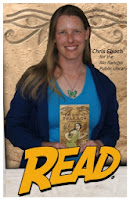My two writing guides are on sale for $1.99 each February 19-25:
You Can Write for Children: How to Write Great Stories, Articles, and Books for Kids and Teenagers
This book focuses on the craft of writing for children. It will help you get started, through straightforward information and exercises you can do on your own or with critique partners. If you’ve been writing for awhile but feel your writing education has gaps, this guide can help you work through those weak points. I share examples from my own work and teaching experience, as well as interviews and advice with published writers and industry professionals.
Whether you’re just starting out or have some experience,
this book will make you a better writer – and encourage you to have fun!
You Can Write for
Children: How to Write Great Stories, Articles, and Books for Kids and
Teenagers is available for the Kindle, in paperback,
or in Large
Print paperback.
The Plot Outline Exercise is designed to help a writer work with a completed manuscript to identify and fix plot weaknesses. It can also be used to help flesh out an outline. Additional articles address specific plot challenges, such as getting off to a fast start, propping up a sagging middle, building to a climax, and improving your pacing. A dozen guest authors share advice from their own years of experience.
Read the book straight through, study the index to find help with your current problem, or dip in and out randomly — however you use this book, you’ll find fascinating insights and detailed tips to help you build a stronger plot and become a better writer.
Chris Eboch is the author of over 60 books for children, including nonfiction and fiction, early reader through teen. Her novels for ages nine and up include The Eyes of Pharaoh, a mystery in ancient Egypt; The Well of Sacrifice, a Mayan adventure used in many schools; The Genie’s Gift, a middle eastern fantasy; and the Haunted series, about kids who travel with a ghost hunter TV show, which starts with The Ghost on the Stairs. Her writing craft books include You Can Write for Children: How to Write Great Stories, Articles, and Books for Kids and Teenagers, and Advanced Plotting.
Learn more at chriseboch.com or her Amazon page.















